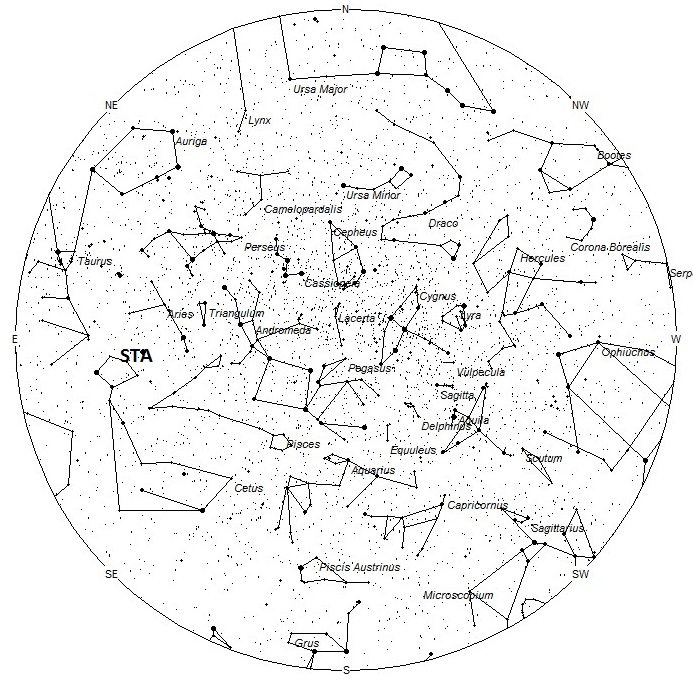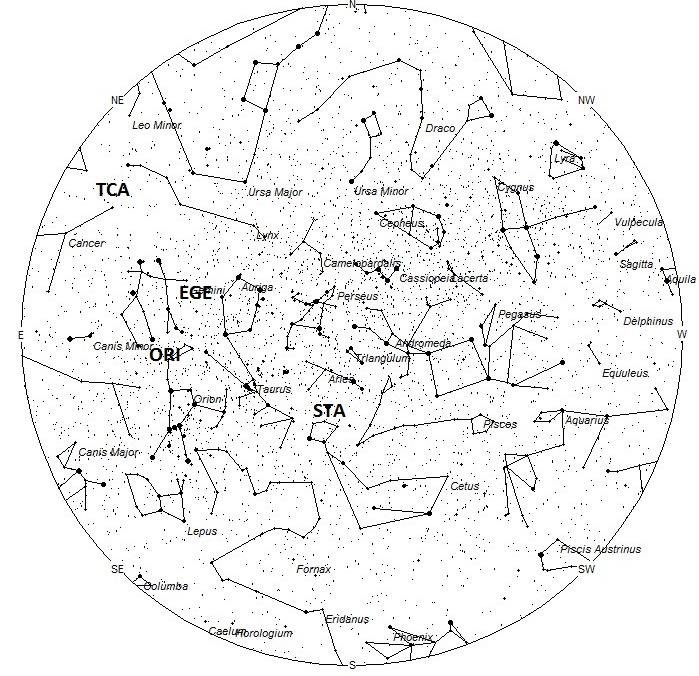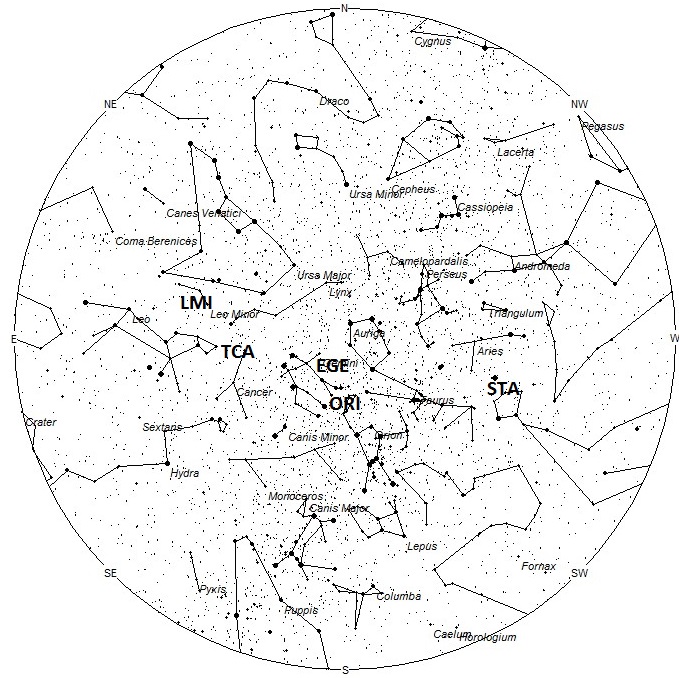During this period the moon wanes from its full phase to nearly one-half illuminated. This weekend the full moon will be in the sky all night long and will spoil any chance of viewing good meteor activity. Toward the end of this period the moon will rise near midnight local daylight time (LDT) and will not be so bright. Successful observations can then be obtained if one has transparent skies and faces away from the moon if it lies above the horizon. The estimated total hourly meteor rates for evening observers this week is near 3 for observers located in the northern hemisphere and 2 for those viewing south of the equator. For morning observers the estimated total hourly rates should be near 20 as seen from mid-northern latitudes and near 12 for observers viewing from tropical southern latitudes. Rates during this period are reduced by moonlight. The actual rates will also depend on factors such as personal light and motion perception, local weather conditions, alertness and experience in watching meteor activity. Note that the hourly rates listed below are estimates as viewed from dark sky sites away from urban light sources. Observers viewing from urban areas will see less activity as only the brightest meteors will be visible from such locations.
The radiant (the area of the sky where meteors appear to shoot from) positions and rates listed below are exact for Saturday night/Sunday morning October 19/20. These positions do not change greatly day to day so the listed coordinates may be used during this entire period. Most star atlases (available at science stores and planetariums) will provide maps with grid lines of the celestial coordinates so that you may find out exactly where these positions are located in the sky. A planisphere or computer planetarium program is also useful in showing the sky at any time of night on any date of the year. Activity from each radiant is best seen when it is positioned highest in the sky, either due north or south along the meridian, depending on your latitude. It must be remembered that meteor activity is rarely seen at the radiant position. Rather they shoot outwards from the radiant so it is best to center your field of view so that the radiant lies at the edge and not the center. Viewing there will allow you to easily trace the path of each meteor back to the radiant (if it is a shower member) or in another direction if it is a sporadic. Meteor activity is not seen from radiants that are located below the horizon. The positions below are listed in a west to east manner in order of right ascension (celestial longitude). The positions listed first are located further west therefore are accessible earlier in the night while those listed further down the list rise later in the night.
The following sources of meteoric activity are expected to be active this week. Details on each source will resume next week when the situation with moonlight is much more favorable.
Rates and positions are exact for Saturday night/Sunday morning.
| SHOWER | DATE OF MAXIMUM ACTIVITY | CELESTIAL POSITION | ENTRY VELOCITY | CULMINATION | HOURLY RATE | CLASS |
| RA (RA in Deg.) DEC | Km/Sec | Local Daylight Time | North-South | |||
| Southern Taurids (STA) | Oct 10 | 02:44 (041) +11 | 29 | 02:00 | 2 – 2 | II |
| Orionids (ORI) | Oct 22 | 06:20 (095) +16 | 67 | 05:00 | 10 – 8 | I |
| Epsilon Geminids (EGE) | Oct 22 | 06:48 (102) +28 | 70 | 06:00 | 2 – 1 | II |
| Tau Cancrids (TCA) | Oct 17 | 09:08 (137) +30 | 69 | 09:00 | <1 – <1 | IV |
| Leonis Minorids (LMI) | Oct 22 | 10:28 (157) +36 | 62 | 10:00 | 1 – <1 | IV |
 American Meteor Society
American Meteor Society


